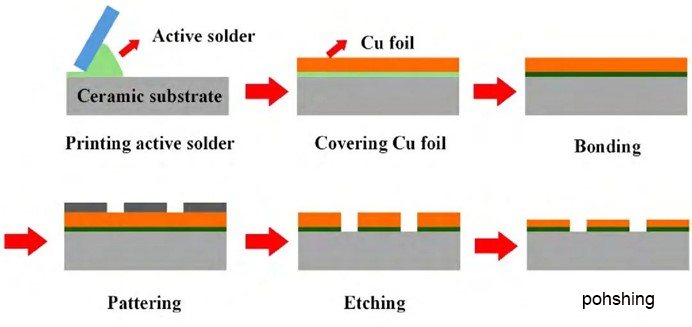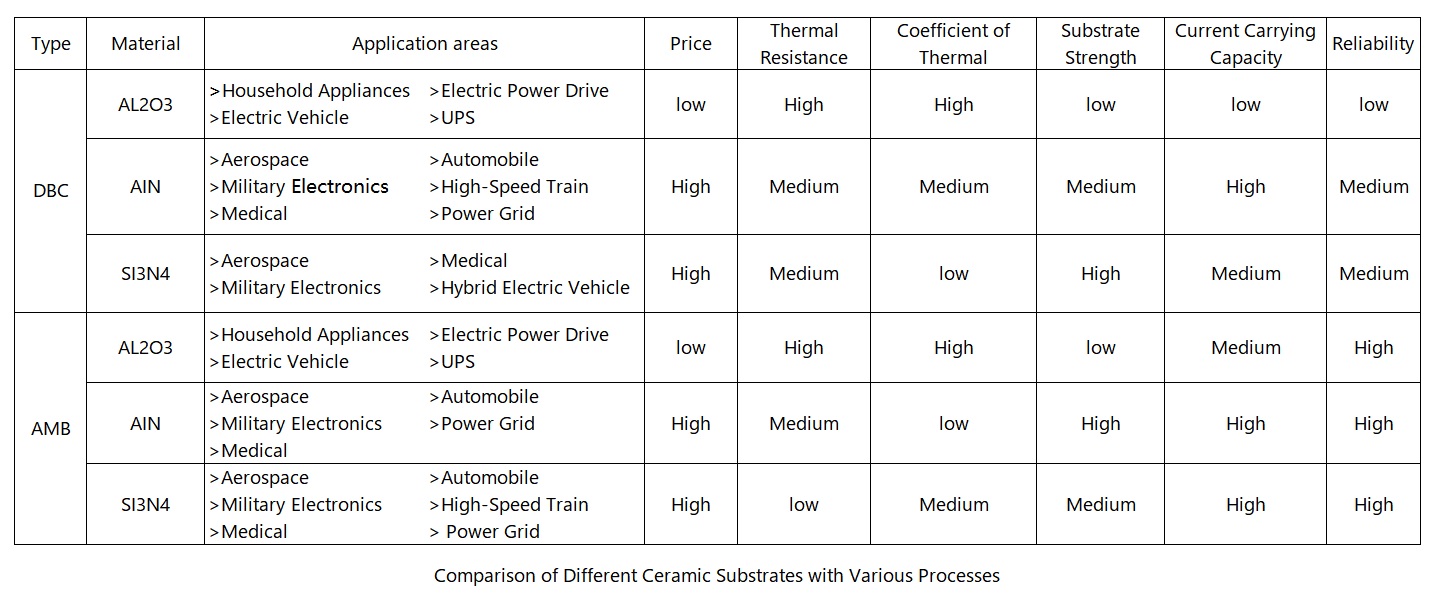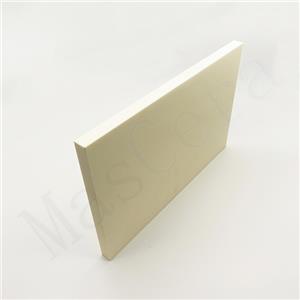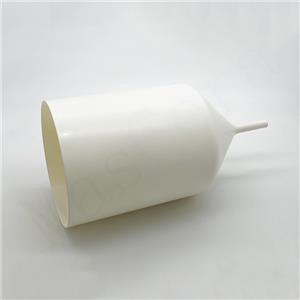Ceramic Substrate Series-Performance and Application of AMB Active Metal
The rise and development of third-generation semiconductors, such as Gallium Nitride (GaN) and Silicon Carbide (SiC), have driven power devices, especially semiconductor devices, towards higher power, miniaturization, integration, and multifunctionality. This progress has greatly contributed to the improvement of packaging substrate performance. Ceramic substrates, widely used in electronic device packaging, have gained popularity due to their high thermal conductivity, high-temperature resistance, low coefficient of thermal expansion, high mechanical strength, corrosion resistance, good insulation, and radiation resistance.
There are various ceramic substrate manufacturing processes, including Direct Bond Copper (DBC) method, Direct Plated Copper (DPC) method, Laser Activated Metallization (LAM) method, Low-Temperature Co-Fired Ceramic (LTCC), High-Temperature Co-Fired Ceramic (HTCC), and the currently emerging AMB method, which is the Active Metal Brazing (AMB) technology.
I.What is Active Metal Brazing (AMB) Technology?

AMB Process Flow
Active Metal Brazing (AMB) is an advancement of the DBC process. It involves adding a small amount of active elements (e.g., Ti, Zr, V, Cr) to the brazing electronic paste, which is then printed onto the ceramic substrate using screen printing technology. The paste is overlaid with oxygen-free copper and sintered in a vacuum brazing furnace. After that, the circuit is created by etching, and the surface pattern is chemically plated. The structure of a ceramic copper-clad plate prepared using the AMB technology is shown in the diagram below.

Structure diagram of ceramic coated copper board with AMB process
II.Comparison between AMB and DBC

1.DBC technology connects copper and ceramic without the need for additional materials, whereas AMB utilizes active metals to braze copper onto ceramics.
2.Compared to DBC, AMB offers better thermal conductivity, heat resistance, higher strength, and greater reliability.
3.DBC cannot be used for bonding Copper to Silicon Nitride (Si3N4) as no Cu-Si-O compounds are formed. Therefore, the AMB process is necessary to bond Silicon Nitride with copper.
III.Classification of AMB Ceramic Substrates by Material
According to the different ceramic materials, the currently mature AMB ceramic substrates can be classified into three types: Alumina (Al2O3), Aluminum Nitride (AlN), and Silicon Nitride (Si3N4).
3.1 AMB Alumina Substrates
AMB Alumina substrates have a wide range of sources and the lowest cost, making them the most cost-effective AMB ceramic substrates. However, due to their low thermal conductivity and limited heat dissipation capability, AMB Alumina substrates are mainly used in low power density applications that do not require strict reliability.
3.2 AMB Aluminum Nitride Substrates
AMB Aluminum Nitride substrates have higher heat dissipation capability, making them more suitable for high-power and high-current operating environments. However, their mechanical strength is relatively low, which limits their application range as the high and low-temperature cycling life of Aluminum Nitride AMB copper-clad substrates is limited.
3.3 AMB Silicon Nitride Substrates
Silicon Nitride ceramics have a small coefficient of thermal expansion (2.4ppm/K), similar to semiconductor chip materials (Si/SiC). AMB Silicon Nitride substrates have high thermal conductivity (>90W/mK) and excellent mechanical properties, providing outstanding high-temperature resistance, heat dissipation, and ultra-high power density.
AMB Silicon Nitride substrates are the preferred choice for applications that require high reliability, heat dissipation, and resistance to partial discharge, such as automotive, wind turbine systems, traction systems, and high-voltage direct current transmission devices. Additionally, they have high current-carrying capacity and excellent heat transfer properties.
IV. Application of AMB Ceramic Substrates
Compared to DBC ceramic substrates, AMB ceramic substrates offer higher bonding strength and better thermal cycling characteristics. According to reliability tests, the thermal cycling test (temperature range: -65°C to 150°C, high and low-temperature holding time: 15 minutes each, with no more than 2 minutes for intermediate cold and hot switching) shows that the thermal cycling times are: Si3N4 ≥ 5000 times; AlN ≥ 1500 times; Al2O3 ≥ 500 times; ZTA (Zirconia Toughened Alumina) ≥ 1000 times.
AMB substrates achieve bonding through a chemical reaction between ceramics and active metal brazing paste at high temperatures. As a result, their bonding strength and reliability are superior, making them suitable for high-power semiconductor module packaging used in areas like rail transportation, new energy vehicles, and smart grids.
XIAMEN MASCERA TECHNOLOGY CO., LTD. is a reputable and reliable supplier specializing in manufacturing and sales of technical ceramic parts. We provide custom production and high precision machining for a wide series of high performance ceramic materials including alumina ceramic, zirconia ceramic, silicon nitride, silicon carbide, boron nitride, aluminum nitride and machinable glass ceramic. Currently, our ceramic parts can be found in many industries like mechanical, chemical, medical, semiconductor, vehicle, electronic, metallurgy etc. Our mission is to provide the best quality ceramic parts for global users and it is a big pleasure to see our ceramic parts work efficiently in customers' specific applications. We can cooperate on both prototype and mass production, welcome to contact us if you have demands.




